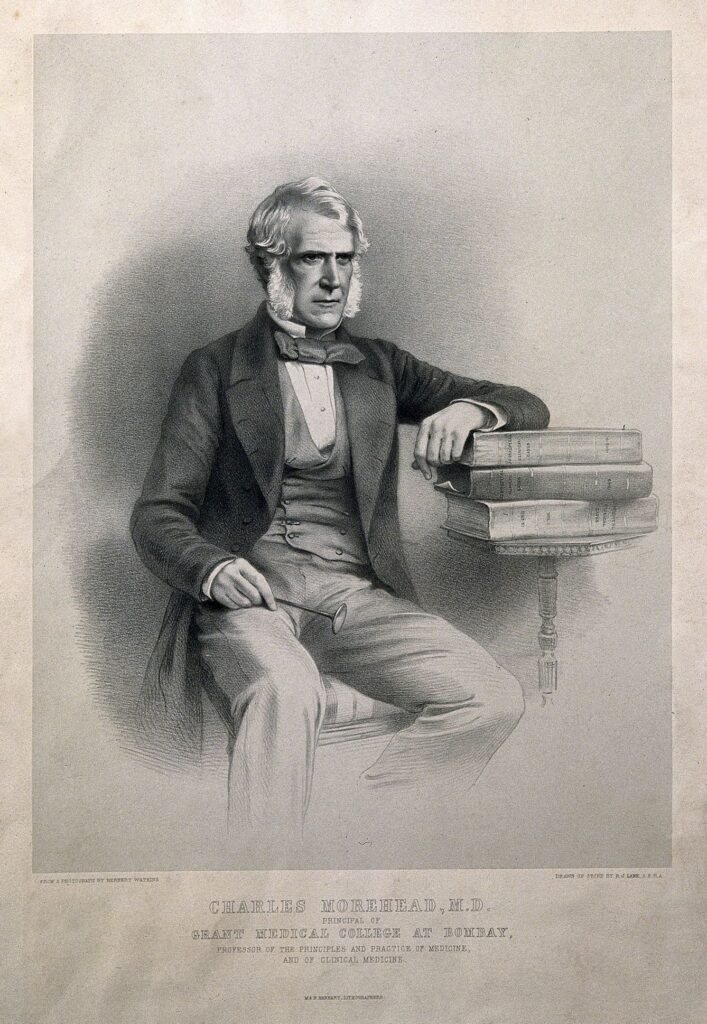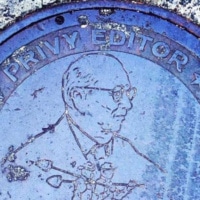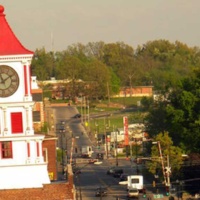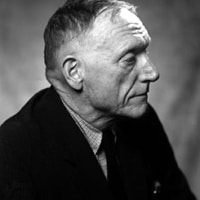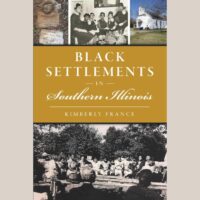Lessons in Christian County history can be found in 22 Kentucky Historical Society roadside markers that tell the stories of Civil War generals, a famous clairvoyant, early churches, a U.S. vice president, innovations in agriculture and other topics.
The local markers are among 2,400 that KHS has installed across the commonwealth. The marker program, launched in 1949, has relied on Kentuckians to submit nominations and research for stories they wanted to document in their communities. The society maintains an online database of every marker that can be searched by county, topic or keyword. Download the Explore Kentucky History app — available from the Google Play or Apple App stores — for additional resources you can access from your smartphone.
Christian County’s 22nd marker, approved earlier this year from an application by retired educator Ruth Lature, of Hopkinsville, honors the legacy of the late Mary Bronaugh. According to newspaper accounts and the family stories, Bronaugh was the first woman in Kentucky who passed the bar to practice law. Bronaugh’s historical marker will become the first devoted to the story of a woman in Christian County. Lature told Hoptown Chronicle that the marker is expected to be installed later this year at the Christian County Justice Center.
Here is a list of every KHS marker in the county:
Courthouse Burned
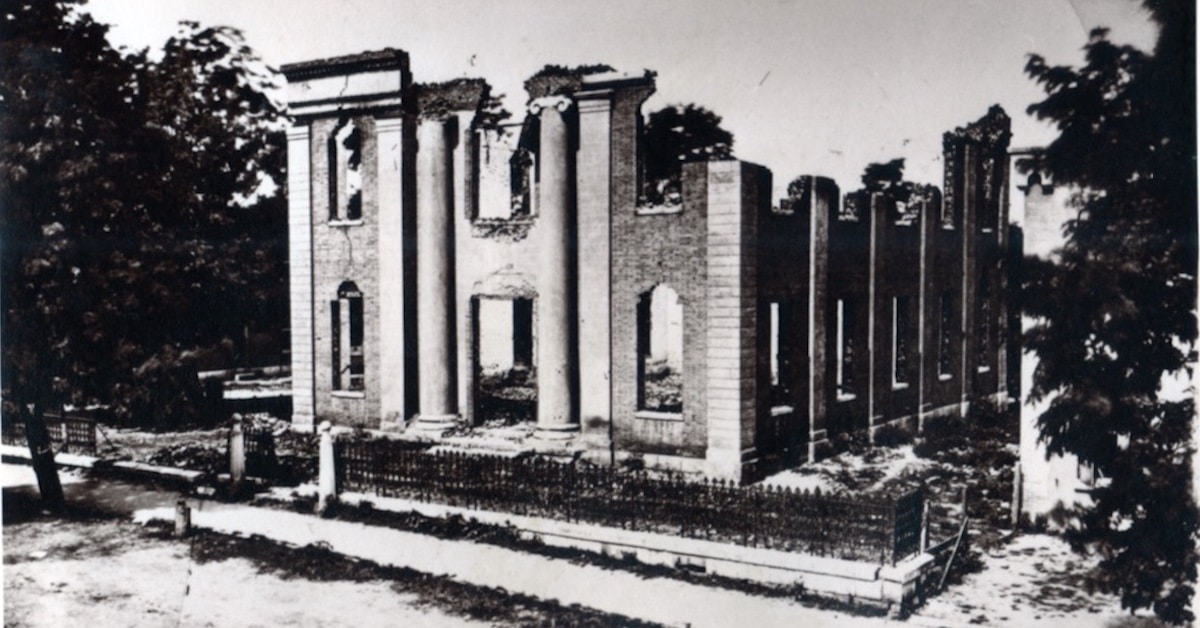
Location: 511 S. Main St., Hopkinsville
On Dec. 12, 1864, Confederate troops under the command of Gen. Hylan B. Lyon burned Hopkinsville’s courthouse to the ground. He ran a campaign into Western Kentucky to enforce Confederate draft laws and to lure Union troops away from Nashville. Along the way, he burned seven courthouses used by Union forces over the course of 23 days.
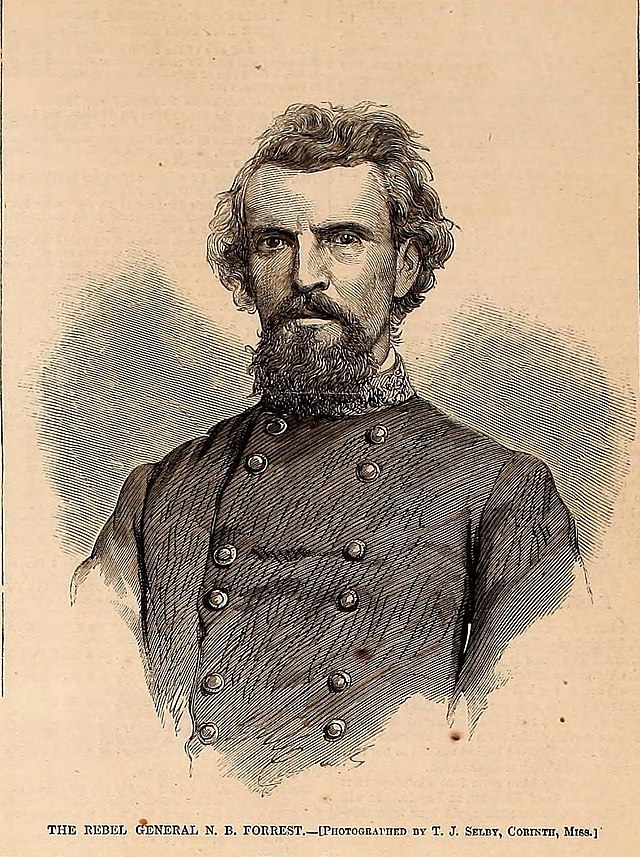
Forrest Reconnoitered
Location: 938 N. Main St., Hopkinsville
Confederate Army Gen. Nathan Bedford Forrest, along with six cavalry companies, learned of threats to Southern sympathizers after returning from a reconnaissance and foraging expedition to the Ohio River. While capturing a few instigators, regimental Surgeon S. M. VanWyck was killed. Forrest stayed here another day before returning to Hopkinsville.
U.S. Vice President
Location: Near 12340 Herndon Oak Grove Road, Herndon
Adlai Ewing Stevenson, 1835-1914, one of four Kentuckians-more than any state, except New York-who were U.S. Vice Presidents. Others were Richard M. Johnson, John C. Breckinridge and Alben W. Barkley. Stevenson, born here, moved to Illinois, 1852. Member Congress two terms. Elected Vice President with Cleveland in 1892. Bryan’s running mate in 1900.
Genoa
Location: Near 10788 Palmyra Road, Oak Grove
Winston Jones Davie, 1824-87, home and burial site. Native of Christian County. He was Kentucky’s first Commissioner of Agriculture, 1876-79. Appointed by Gov. James B. McCreary. Davie was an outstanding farmer, banker, legislator, and agricultural writer. Elected to Kentucky Legislature, 1850. Devoted life to improvement of agriculture and rural life.
CSA Commander Headquarters
Location: 530 N. Main St., Hopkinsville
Nathan Bedford Forrest, stationed in Hopkinsville during winter of 1861-62, resided, with wife and daughter in a log house. As colonel, in command 6 companies CSA Cavalry, reconnoitered Union forces between here and the Ohio River, defeated gunboat, CONESTOGA, at Canton, also US force at Sacramento. Withdrew when CSA left Bowling Green.
101 CSA Unknown – Six companies CSA Cavalry under Col. Forrest were camped a mile to the north at the old fairgrounds, while reconnoitering this area in winter, 1861-62. A severe epidemic swept the camp and several hundred men died. When the city enlarged cemetery, 1887, John C. Latham, native of Hopkinsville, had bodies of 101 unknown reinterred and a large monument erected.
Union General’s Grave
Location: 530 N. Main St., Hopkinsville
Brig. Gen. James S. Jackson was killed in the battle of Perryville on Oct. 8, 1862, and is buried in the south end of cemetery. Born in 1832 in Woodford County, Kentucky in 1823, he came to Hopkinsville in 1855. Jackson was elected to Congress in 1861, and authorized by President Lincoln, he recruited 3rd Kentucky Calvary during fall 1861. He served in battles — Shiloh and others — before his untimely death.
Peace Park

Location: 530 E. 9th St., Hopkinsville
Virginia Park, which extends from Seventh to Ninth at Campbell Street in downtown Hopkinsville, was originally the homeplace of philanthropist John C. Latham Jr., a wealthy banker who left the two-acre site to the city upon his death on Aug. 18, 1909. The site was home to Hopkinsville’s first tobacco warehouse, which was destroyed by Night Riders on Dec. 8, 1907.
Latham’s will provided $20,000 to develop the property into a park that he wanted named for his mother, Virginia. Following the removal of the family’s two-story house, the park was developed by the famed landscape architectural firm established by Frederick Law Olmsted.
Trail of Tears
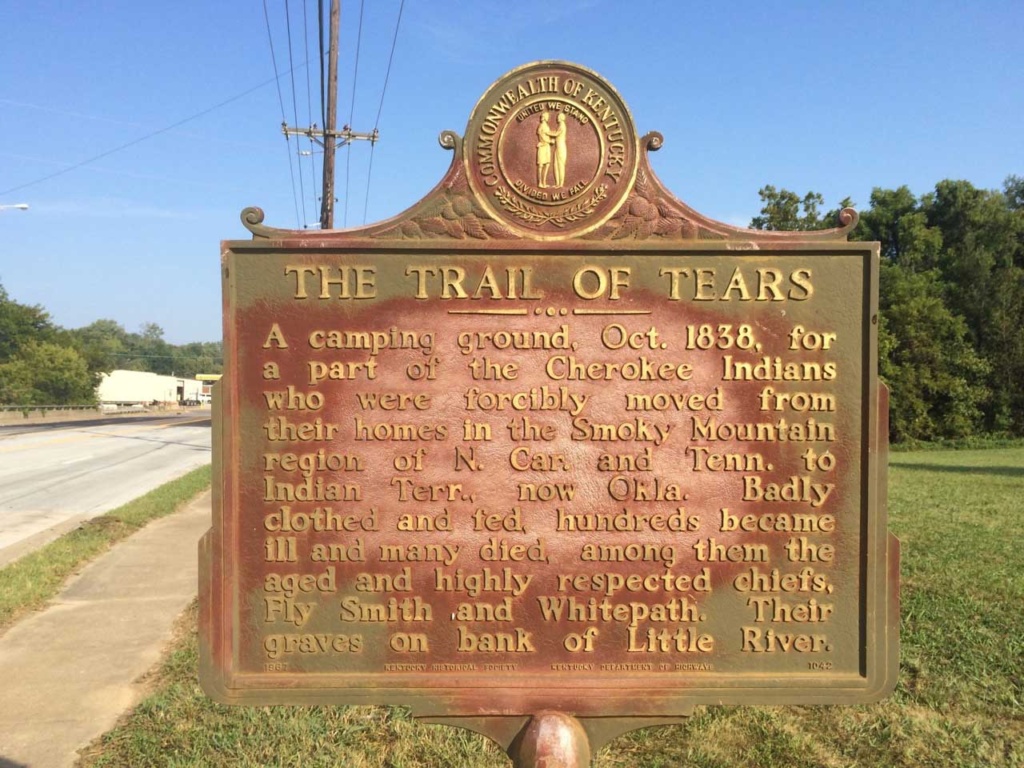
Location: 1519c E. 9th St., Hopkinsville
Part of the Cherokee Indians, who were forcibly moved from their homes in the Smoky Mountain region of North Carolina and Tennessee to Indian Territory camped here in October 1838. Badly clothed and fed, hundreds became ill and many died, among them the aged and highly respected chiefs, Fly Smith and Whitepath. Their graves can be found on the bank of Little River.
First Presbyterian Church

Location: 303 E. 9th St., Hopkinsville
Organized in 1813, traditionally by the Reverend Gideon Blackburn, a pioneer minister and missionary to the Cherokee Indians. The present church building, not including later additions, was built between 1848-1852. It was used as a hospital during severe epidemic that swept the camp of Confederates under Col. Nathan Bedford Forrest through the winter of 1861-62.
Church Hill Grange House
Location: Near 7550 Cox Mill Road, Hopkinsville
Built 1878 by the Grange. Used ever since for public meetings. Kentucky’s first farm cooperative, the Church Hill Grange operated a livestock market here. Leading this pioneer cooperative were two Christian County farmers — Winston J. Davie, who served as Kentucky’s first Commissioner of Agriculture from 1876-79 and his brother Montgomery Davie, Master of the Kentucky Grange.
Christian County Named, 1797
Location: 511 S. Main St., Hopkinsville
Christian County was named for Col. William Christian, a native Virginian, soldier, politician and pioneer. Christian served as a colonel in the American Revolution and a member of the Virgnia legislature. He moved his family in 1785 to Jefferson County, where his Virginia land grants totaled 9,000 acres. Christian was killed in 1786, defending the frontier against Indians.
Pioneer Graveyard, 1812-1858
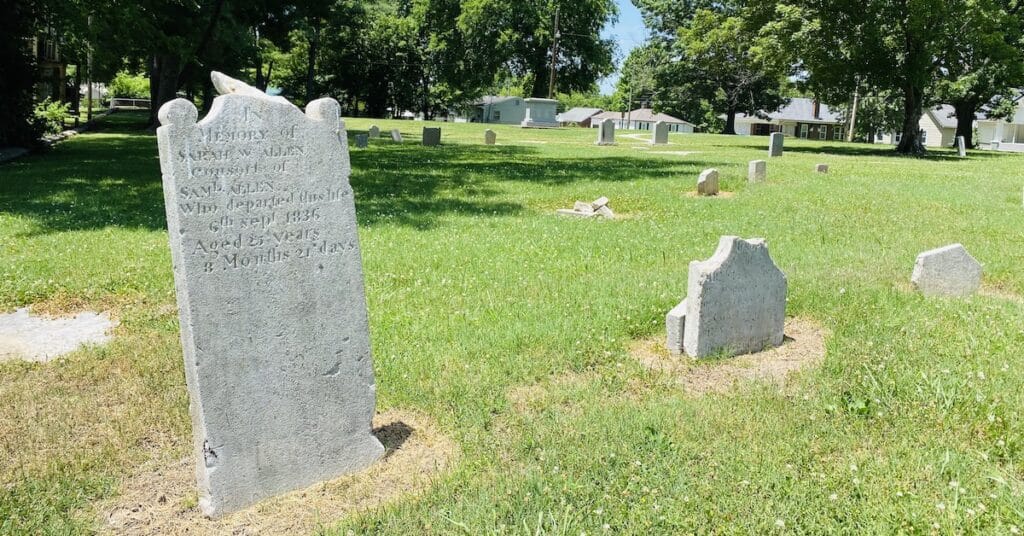
Location: 308 W. 13th St., Hopkinsville
Within this enclosure are buried 185 named persons, and many more unknown, all early settlers of Christian County. The land for this cemetery was donated in 1812 by Bartholomew Wood, the first settler in Hopkinsville. He also donated land and timber for the first public buildings, 1797. He died in 1827 and was buried here.
Bethel College
Location: 210 W. 15th St., Hopkinsville
Organized by the Bethel Baptist Association and opened in 1854 as Bethel Female High School, the college was used by the Confederate States of America as a hospital during the Black Measles epidemic from 1861-1862. It opened as Bethel Women’s Jr. College in 1917 and was closed from 1942-1945, when rooms were rented to Camp Campbell Army officers. It became co-educational in 1951, changing its name to Bethel College. The college closed in 1964 and the building was razed two years later.
Famous Prophet
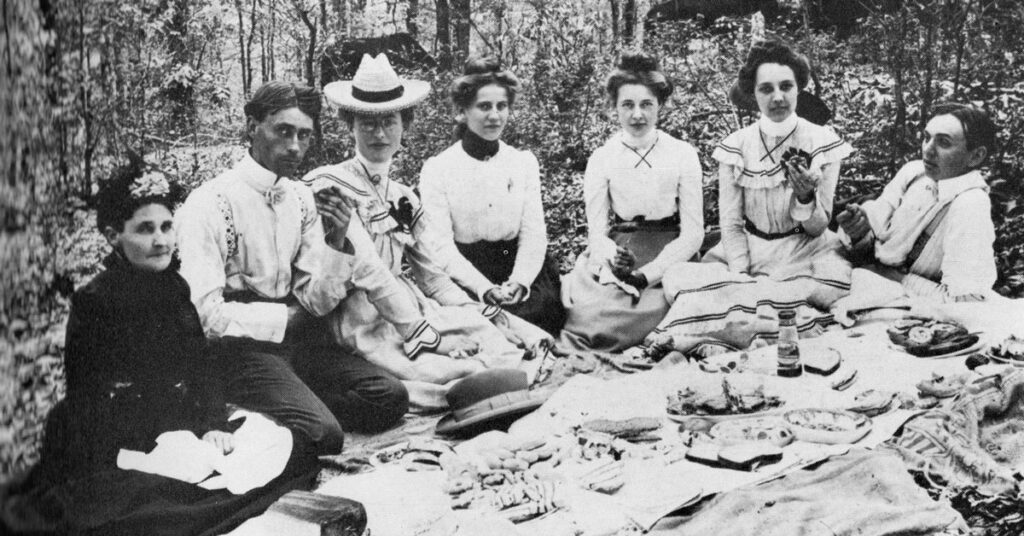
Location: 530 N. Main St., Hopkinsville
Edgar Cayce was a nationally renowned psychic counselor and healer. A humble and religious man, Cayce never profited from his predictions. Instead, he used his reputed gift of extrasensory perception, including medical diagnosis, to better man’s understanding of God’s purpose. He was born near here in 1877, and died in 1945 in Virginia.
Hotel Latham

Location: 602 S. Virginia St., Hopkinsville
Erected on this site in 1894 and named for Hopkinsville native and philanthropist, John C. Latham, Jr. Structure was Italian Renaissance style. It became a well-known tourist stop, social and civic center. Among its famous guests: Vice President Charles Curtis, William J. Bryan, John Philip Sousa, Ethel Barrymore, and Capt. Eddie Rickenbacker. Hotel burned, 1940.
Universalist Church
Location: Near 13603 Dawson Springs Road, Crofton
Near this site, the Consolation Universalist Church was organized by a traveling preacher, William Lowe, in the home of James E. Clark in May 1819. It was the first Universalist Church organized west of Allegheny Mountains. Early ministers were L.T. Brasher, J.E. McCord, D.M. Wooldridge, W.E. McCord, Joab Clark, and L.M. Pope. Presented by the Kentucky Universalists.
Grace Episcopal Church
Location: 216 E. 6th St., Hopkinsville
Organized in 1831 by local laymen with aid of George P. Giddinge, Md. missionary, who became first rector, and Benjamin B. Smith, later first Bishop of Ky. and Presiding Bishop of the Episcopal Church. First church was built ca. 1850 on Virginia St. On Oct. l0, 1875, Jefferson Davis, an Episcopalian and native of Christian Co., worshiped there. Over.
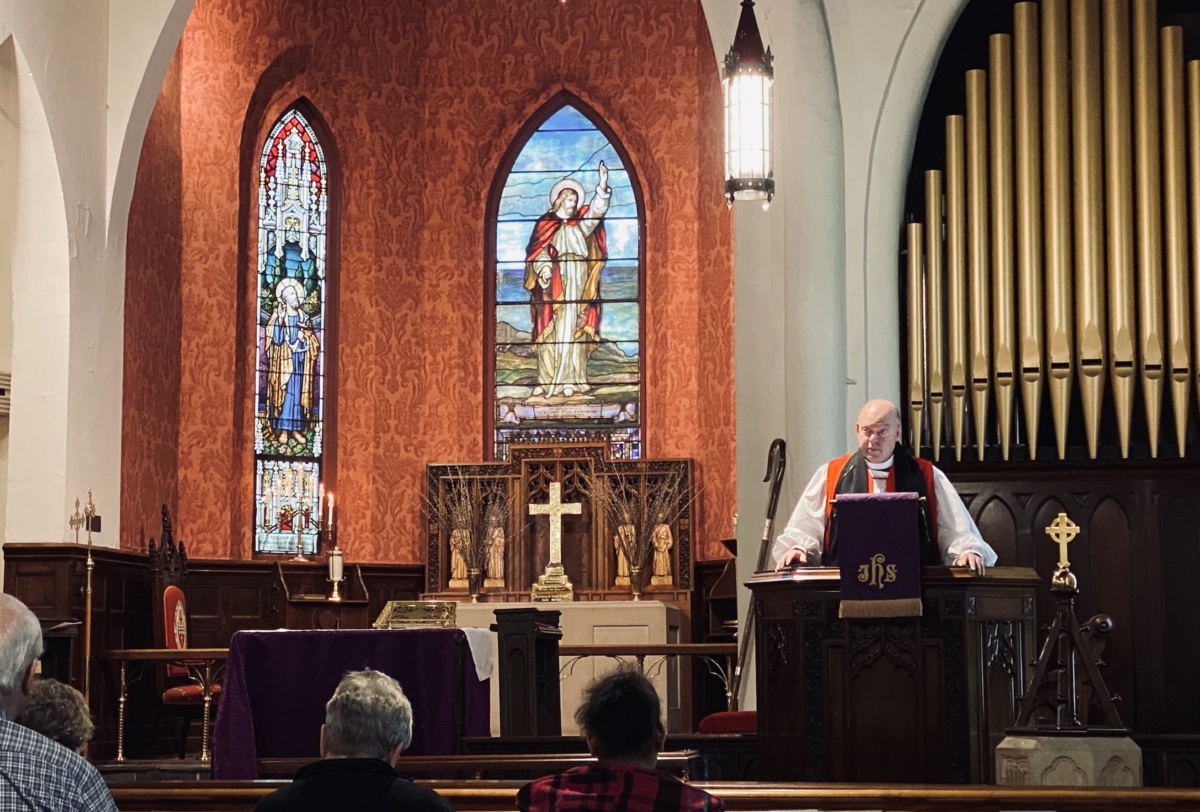
Present church built 1883-84. Liberal contributor was John C. Latham, Jr. Under rectors John W. Venable, 1883-94, and George C. Abbitt, 1902-29, church became center for social and cultural community activities. Parish house, a memorial to Emma Glass Gaither, built 1906. Tower destroyed in 1978 by tornado, restored in 1979. Presented by Grace Episcopal Church.
No-Tillage Farming
Location: Lafayette Road, Herndon
The first practice of no-tillage crop production in Kentucky occurred on this farm in 1962. Harry and Laurence Young, of Christian County, were among first in nation to experiment with no-tillage techniques, which used herbicides in providing seed bed in residue stubble; conserved soil and water; saved time, labor and fuel; and often produced higher crop yields.
Charles S. Morehead, 1802-1868
Location: 401 W. 13th St., Hopkinsville
This Kentucky governor and congressman was born near Bardstown. A graduate of Transylvania, he began law practice in Hopkinsville. Morehead served in state legislature, as attorney general, in U.S. House of Representatives, and as governor of Kentucky from 1855-59. During his administration, geological survey completed, state prison enlarged, and funds allotted for annual state fair.
Hoping to avert civil war, Morehead attended the Washington Peace Conference in 1861. Although neutral, he sympathized with Confederacy and criticized Lincoln’s policies. Arrested by federal leaders and imprisoned for several months. Warned of another arrest, he fled to Canada, Europe, and Mexico. Died at his Mississippi plantation, 1868. Buried in Frankfort Cemetery.
Lewis & Clark in Kentucky
Location: 511 S. Main St., Hopkinsville
William Clark, co-leader of the Lewis & Clark Expedition, and his family stopped at Allsbury’s Tavern in Hopkinsville on Oct. 2, 1809. In 1807, Clark was appointed militia brigadier general and chief Indian agent for the Louisiana Territory. Thomas Allsbury was an early tavern keeper in Hopkinsville. In the War of 1812, he organized a company and served as a captain in the First Regiment of Kentucky Mounted Militia.
Ted Poston, “Dean of Black Journalists”
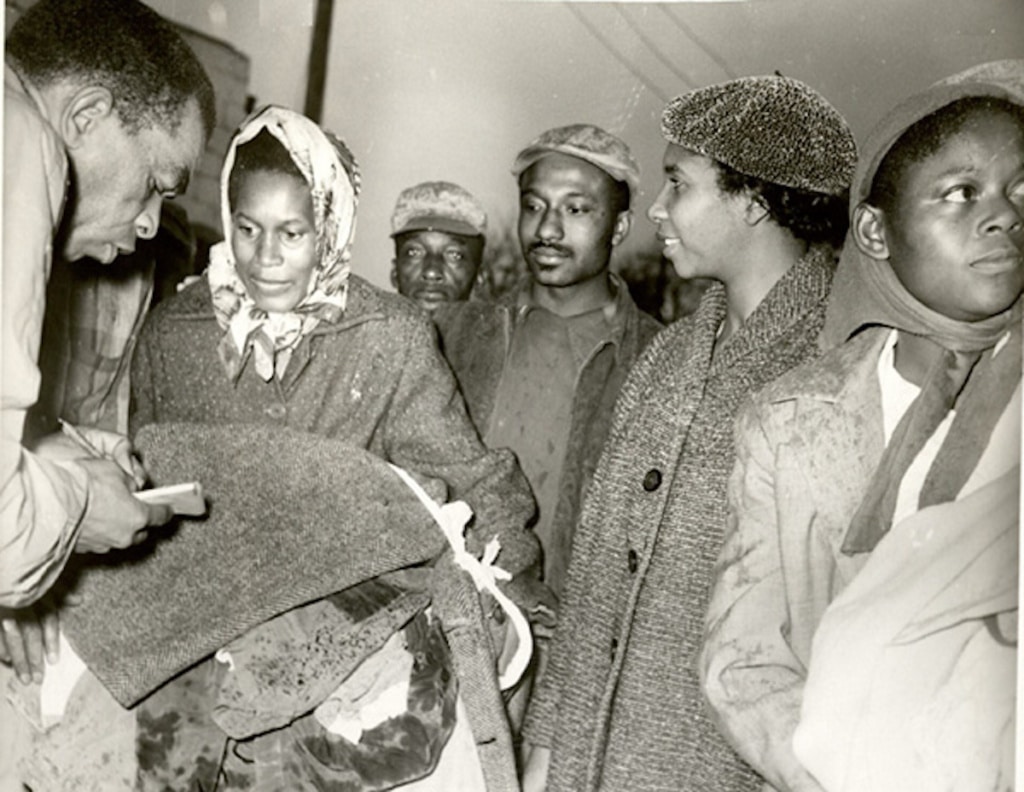
Location: 198 W. 9th St., Hopkinsville
Theodore Roosevelt Poston was born on July 4, 1906, in Hopkinsville. He was a graduate of Attucks High School and Tennessee A&I State College. In 1936, he began freelance writing for the New York Post and was soon hired full-time. He retired in 1972 after spending a career there. He died in New York City in 1974 and is buried in Cave Spring Cemetery in Hopkinsville.
Poston covered major civil rights stories of his era and was nominated for a Pulitzer Prize in 1949. He received numerous other awards, including the George Polk Award in Journalism for national reporting. His book of short stories, The Dark Side of Hopkinsville, was published in 1991. He was inducted into the Kentucky Journalism Hall of Fame in 2000 and the Kentucky Writers Hall of Fame in 2022.
Mary Edmunds Bronaugh
Location: 403a W. 9th St., Hopkinsville
Born in Hopkinsville in 1885, she was admitted to the Kentucky Bar Association and was a member of the Kentucky Equal Rights Association. As a suffragist and the first president of the Kentucky League of Women Voters, she fought to secure the ratification of the 19th Amendment. She was an officer in the Kentucky Federation of Business and Professional Women. She died in 1973 and is buried at Riverside Cemetery.
Jennifer P. Brown is co-founder, publisher and editor of Hoptown Chronicle. You can reach her at editor@hoptownchronicle.org. She spent 30 years as a reporter and editor at the Kentucky New Era. She is a co-chair of the national advisory board to the Institute for Rural Journalism and Community Issues, governing board president for the Kentucky Historical Society, and co-founder of the Kentucky Open Government Coalition.
